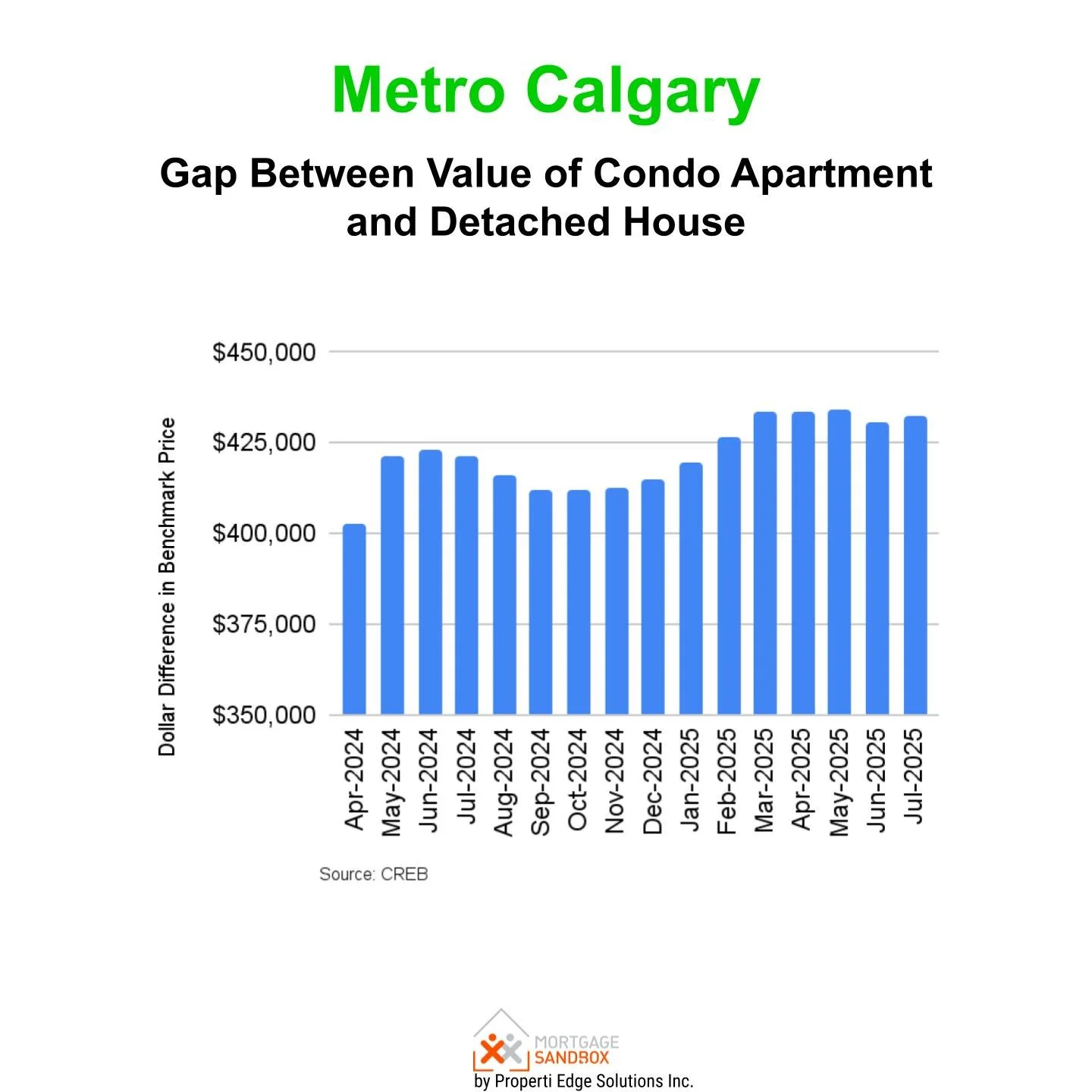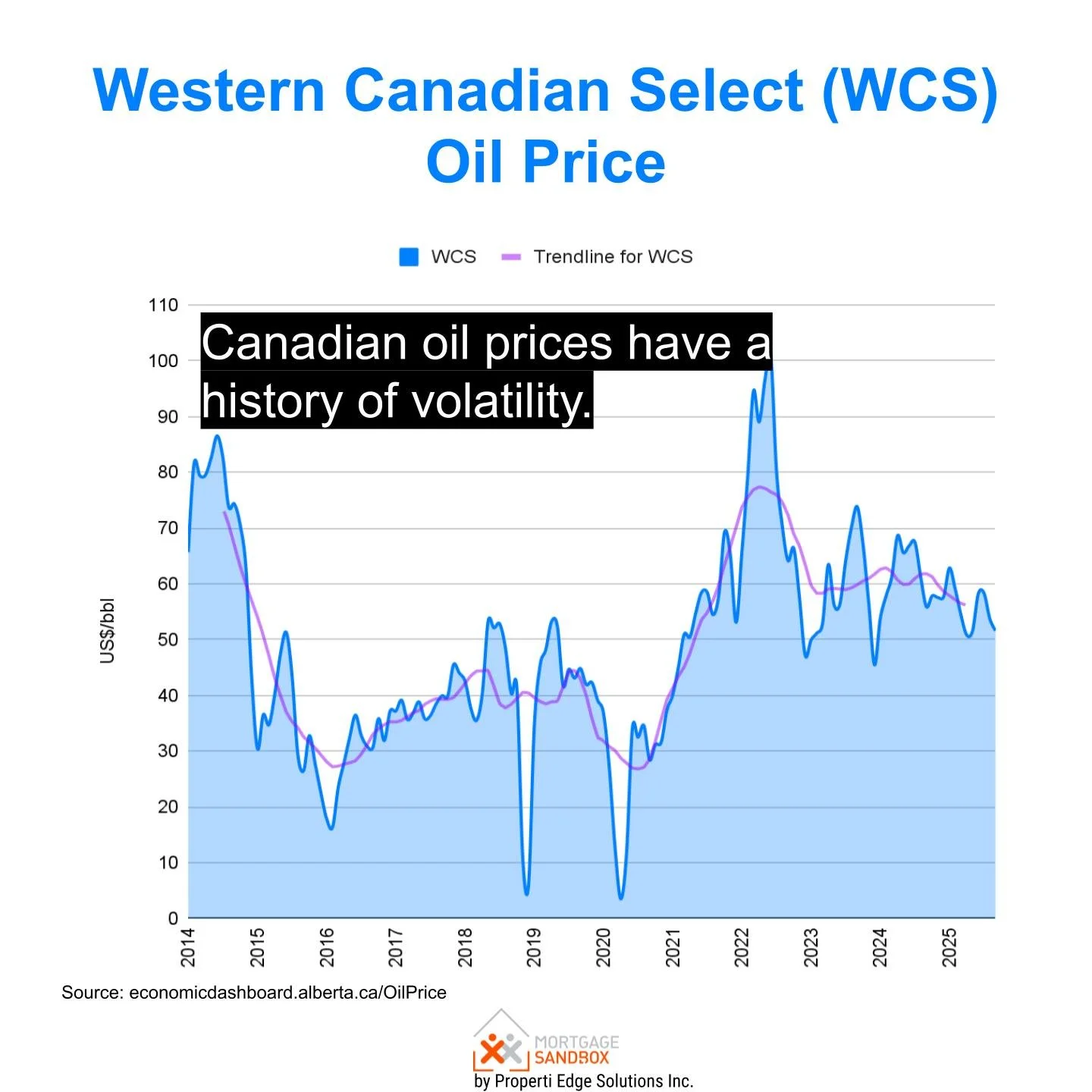Five Forces Driving Alberta Home Prices
Last updated:
At the highest level, supply and demand set house prices and all other factors drive supply or demand. At Mortgage Sandbox, we have created a five-factor framework for gathering information and performing our market analysis. The five key factors are core demand, non-core demand, government policy, supply, and popular sentiment.
In the long run, the market is fundamentally driven by economic forces, but sentiment can drive prices beyond economically sustainable levels in the short run.
Summary
Core and non-core demand in Calgary and Edmonton have both strengthened significantly compared to previous years, driven by rapid population growth, declining mortgage rates, and increased activity from property investors and flippers. As more people move to these cities for job opportunities and affordability relative to other major Canadian markets, competition for housing has intensified. Investor interest has surged, further pushing up prices, while falling mortgage rates have increased purchasing power, keeping demand strong. These factors have created a highly competitive housing environment, sustaining upward pressure on property values. However, the recent migration policy pivot and the threatened imposition of tariffs by the Trump administration threaten to disrupt this momentum, introducing new economic uncertainty.
Despite record-high construction levels, supply has struggled to keep pace with demand. In 2024, Calgary saw 24,000 new housing units built—up from 15,000 in 2021—while Edmonton added 18,000 units, compared to 12,500 in 2021.
Both markets remain seller’s markets, with less than four months of inventory available for sale. While inventory levels have risen since the spring of 2024, much of the available supply is concentrated in the condo apartment segment, whereas detached houses and townhomes remain more constrained. This imbalance continues to fuel price growth, particularly in the more in-demand housing types.
1. Core Demand
Core Demand is a function of:
Population Growth: The pace at which people are moving to an area. An average of roughly 2.5 people live in a household.
Home Price Growth: Changes in the market value of the desired home.
Savings-Equity: How much disposable after-tax income you’ve been able to squirrel away, plus any equity you have in your existing home.
Financing: Your maximum mortgage is calculated using income (i.e., how much money you can put toward mortgage payments) and interest rates (how big are the mortgage payments). Local employment (unemployment) levels factor into this because you need a job to qualify for a mortgage.
Population Growth
Alberta’s population has long been on an upward trajectory, but the rate of growth is what truly matters for housing markets. If population expansion merely keeps pace with historical trends, it exerts little additional pressure on property prices. A sharp acceleration fuels demand and drives valuations higher, while a slowdown—or outright contraction—could have the opposite effect.
After stalling in 2020, Alberta’s population growth rebounded, making up for lost ground during the pandemic but causing challenges. The federal government’s recent pivot on immigration policy, which aims to curb overall inflows, raises the prospect of a population decline in 2025. A shrinking population could weigh on economic growth and housing demand, challenging the market dynamics that have driven prices upward in recent years.
Early data suggests this has begun to affect population growth, which has already flattened significantly in Alberta.
Home Price Changes
Price growth reduces affordability and reduces the pool of qualified potential buyers. In an ironic twist, rising prices create downward pressure on prices. This is a factor for first-time homebuyers trying to buy an entry-level apartment.
As a rule of thumb, homeownership costs are considered unaffordable when they exceed 40% of household income.
According to RBC Royal Bank, homeownership costs in Calgary were 42% of the median household income, whereas, in Edmonton, ownership costs were 34%. In other words, Alberta's home prices are sustainable within long-term economic fundamentals.
Savings-Equity
Equity
Existing homeowners benefited from price appreciation, so they have more home equity to use when buying another home.
A recent market softening has eroded some of this equity, but not enough to have a significant impact.
Condo-to-House Price Gap
A large gap means that condo owners who want to upsize to a detached house need more savings and mortgage financing. A narrowing price gap helps to make upsizing more accessible for condo owners.
The gap between house and condo prices has increased significantly but has stabilized in the past few months.
Savings
With inflation rising faster than incomes, everyday items are becoming more expensive while paychecks are unchanged. If this trend continues, Canadians will run out of savings (including nest eggs for buying a home) and begin taking on debt to cover everyday expenses.
Financing
Mortgage Interest Rates
Since 2023, mortgage rates have been falling, however, they’ve not dropped since March. Variable mortgage rates have crept higher in the last few months. While rates are lower than the 2023 peaks, they are still significantly higher than they were during the pandemic. Many homeowners have mortgage renewals coming due in 2025, and they will likely face higher monthly payments going forward.
Lower rates also boost property buying budgets.
Employment and Incomes
While the employment picture has improved significantly, you must hold a job for 3 to 6 months before applying for a mortgage.
Job growth is critical because population growth will not put upward pressure on home values if those new arrivals don't have meaningful work.
The United States has imposed a 25% tariff on Canadian oil, which reduces demand for it and puts downward pressure on the price of Alberta oil. Price volatility makes it difficult for producers to make long-term investment decisions, which will weigh on Alberta's prospects unless the economy diversifies.
Alberta's full-time employment appears to be tightly linked to the price of oil.
Recently, full-time employment has trended upward. If full-time employment continues to trend upward, we can expect more demand in 2025, regardless of population growth. On the other hand, Calgary and Edmonton have higher unemployment rates than the national average.
Homeownership Costs
The cost of utilities (heating oil, natural gas, and power) has been rising. In many cases, heating costs alone have risen $100 per month. Add the rising cost of groceries and gasoline to the equation, and it is clear that homebuyers have less disposable income to put toward mortgage payments.
Overall Core Demand
Alberta's population has been growing at higher rates, and full-time employment has kept pace; however, a change in federal immigration policy promises significantly lower population growth, which will make demand more volatile.
Overall, core demand is higher than it was six months ago, but falling population growth and trade tariffs could potentially derail demand in 2025.
Find out how much you can afford to spend!
2. Non-core Demand
Non-core demand represents short-term investment, long-term investment, and recreational demand (i.e., homes not occupied full-time by the owner). Here is where foreign capital, real estate flippers, and dark money come into play. It also includes short-term rentals, long-term rentals, and recreational property purchases.
Since non-core demand is ‘optional’ (i.e., not used to shelter your family), it is more volatile than core demand.
Between 20 and 30 per cent of Canadian residential property (all types of properties) buyers are investors. In the condo apartment market, the share of investors is likely higher.
Foreign Capital
The Federal Government, using its housing agency, has announced a temporary ban on home purchases by non-Canadians from January 1, 2023, to January 1, 2027. The foreign-buyer ban won’t apply to students, foreign workers, or foreign citizens who are permanent residents of Canada; however, the additional hurdles will reduce the flow of capital to Canadian real estate compared to previous years.
Long-term Rental Investors
Rental investments are a significant driver of home prices. Demand increased in the major cities as many people began to recognize they would need to return to the office or adopt a hybrid work model.
New risks exist in the rental market due to potential planned reductions in study permits, rising mortgage costs, and rising property taxes.
1. Immigration Policy
The Minister of Immigration, Refugees and Citizenship announced that the Government of Canada will set a two-year study permit intake cap. For 2024, the cap is expected to result in approximately 360,000 approved study permits, a decrease of 35% from 2023. It is unclear what impact this will have on rent rates.
Rent rates have dropped recently in Calgary and Edmonton, and this could be enough to move many potential investors to the sidelines until rents stabilize.
2. New Mortgage Rules
The new federal rules will reduce market demand by directly increasing borrowing costs and constraining leverage for a significant segment of buyers. By prohibiting the double-counting of rental income across multiple properties and classifying loans heavily reliant on that income as higher-risk, the regulations will suppress the purchasing power of investors, who constitute over a quarter of Canadian homebuyers. This impact will be disproportionately higher for condos. A sharp reduction in investor activity, particularly within this concentrated segment, could remove a foundational source of demand, placing considerable downward pressure on a market that is already structurally dependent on investment purchases.
Short-term Rentals
In May 2019, Edmonton counted 2,146 registered short-term rentals. 63 per cent were ‘commercial operators’ renting the entire home. In September 2019, Calgary city staff estimated there were 6,000 short-term rentals within the city limits.
In October 2022, according to Airdna.co, short-term rentals were:
Edmonton: 2,600 rentals with 63% occupancy.
Calgary: 4,300 rentals with 70% occupancy.
An occupancy rate between 70% and 95% is typically considered a supportive investment environment.
Tourism is finally on track to match or exceed pre-pandemic levels! This bodes well for short-term rentals.
House Flipping
The market has softened, and house flipping is beginning to look risky.
Note: The flaw with the chart below is that most flippers will "live in the property" for at least 1 year before selling so they can claim it as their principal residence and avoid capital gains tax on the sale. The regulators don’t count flips that occur within 18 months. The rate of flipping could be much higher.
Dark Money
Dark money is the proceeds of crime or money that are transferred to Canada illegally. Dark money includes funds earned legitimately that are transferred illegally from countries with capital controls (e.g., China) and legitimate earnings moved from nations subject to international sanctions (e.g., Iran, Russia, and North Korea).
To hide the illegal nature of funds, they are laundered in the real estate market. Sometimes, the property's true owner is hidden by using a Straw Buyer, and other times the property is owned by a shell company.
Sometimes a real estate agent or lawyer will accept the illegal cash to help the nefarious individuals hide its true origins. In 2015, a B.C. realtor was caught with hundreds of thousands of dollars in her closet at home.
A report says Alberta is to blame for most of Canada’s money laundering, and we see no evidence of a diminished role for dark money in local real estate.
Overall Non-core Demand
Given the foreign buyer restrictions and volatility in the rental market, we assess that capital inflows toward residential real estate for non-core uses will soften in 2025. This adds some downward pressure on Alberta home prices.
3. Government Policy
Foreign Buyer Restrictions
The Federal Government, using its housing agency, has announced a ban on home purchases by non-Canadians effective January 1, 2023. There are some exceptions for those with temporary work permits, refugee claimants, and international students.
The four-year ban was implemented to allow the government to study whether it reduces the property market's levels of speculation and commoditization.
Overall Government Influence
Overall, the government unwound many programs supporting home values through the pandemic and subsequently implemented restrictions on foreign investment. Compared to a year ago, there is significantly less support from the government to maintain home values.
4. Supply
Supply comes from two sources.
Existing sales: Existing home sales are sales of ‘used homes.’ They are homes owned by individuals who sell them to upgrade, move for work, or other reasons. The Toronto Real Estate Board only reports existing home sales and listings.
Pre-Sales and Construction Completions: Most new homes are sold via pre-sales before the construction has started. These are predominantly apartments and townhomes. Data on pre-sales is private and difficult to find, but construction starts (reported by the government) are a very accurate lagging indicator of pre-sale activity.
Rising supply releases the upward pressure on prices caused by demand.
Months of Supply of Existing Homes
While the total number of homes for sale is a key metric of supply, shown below, the ratio of listings to purchases expressed in months of supply is a better indicator of where prices are headed. This is because months of supply show the relationship between supply and demand. If supply and demand drop together, then the market balance is maintained, and price pressures are unchanged.
Supply has been surprisingly tight and is now trending slightly upward.
New Construction:
Calgary and Edmonton have many more homes under construction than in previous years.
As these projects are completed in the next 18 months, they might come onto a soft market. While many of the homes under construction are pre-sold, their new occupants will be vacating or selling their current residences.
Pre-sales:
Pre-sales are purchases of unbuilt and completed brand-new homes from developers. Typically, a developer must sell 70% of homes in a building before starting construction, so housing starts are a good indicator of successful pre-sales.
Alberta pre-sales are hotter than average. To mitigate the risk of unfavourable market conditions in 2025-26, developers have rushed projects to market so they can lock in their buyers and financing.
Popular Sentiment
Popular sentiment can be volatile and easily influenced by the latest headlines. Sentiment can shift quickly, as witnessed in the past two years.
Canadian Consumer Confidence
The Ipsos-Reid and Nanos Canadian Confidence Index shows that Canadian consumer confidence has improved significantly, and confidence in real estate values has improved. Less than 40 per cent of Canadians believe home prices in their neighbourhood will rise over the next six months.
Although consumer sentiment is a key factor contributing to real estate price trends, sentiment on its own is not an accurate predictor of future prices.
Conclusion
Here is a quick summary:
Core demand is stronger because of lower mortgage rates and exploding population growth, but Canada’s population could shrink in 2025. Trump’s tariffs could cause a recession, further dampening demand.
Non-core demand is weaker due to the declining rent rates, although house flippers are a significant influence.
The government's imposition of a foreign buyer ban removes some potential buyers, though foreign buyers were never a significant factor in Alberta.
Supply is rising, and there are record numbers of homes under construction, many of which will be completed in the next 18 months.
Consumer confidence in real estate is mildly negative.
While it is not guaranteed, the current conditions dramatically increase the risk of a significant market correction.
Find out where prices are headed in Alberta
Like this report? Like us on Facebook.













